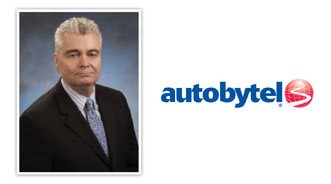Autobytel & Polk Study: Nearly Half of Potential New-Car Buyers Opt for CPO or Used Model

One of the primary findings from a case study based on data collaboration between Autobytel and Polk indicated that dealers and automakers should place even more emphasis on their certified pre-owned and used programs when following up on online consumer leads.
Why? Autobytel and Polk found that nearly 46 percent of consumers who planned to buy a new vehicle bought a used car or truck instead.
The study revealed a pair of other recommendations Autobytel and Polk said should be top of mind for both stores and OEMs:
—Do more to differentiate their brand from the competition: More than 55 percent of consumers who intended to buy a new vehicle from a specific brand actually bought another make (either new or used).
—Realize that every consumer who goes online is a conquest opportunity and advertise the brand’s strengths accordingly: Just 30 percent of consumers who bought a new vehicle purchased a new vehicle from the brand for which they submitted a lead.
“The conversion data from Polk has proved to be beneficial to us internally as well as for our clients,” Autobytel chief executive officer and president Jeffrey Coats said.
“By analyzing consumer behavior, we are able to better manage and focus our internal lead generation activities,” Coats continued. “Autobytel dealers and OEM partners benefit not only from our actions, but also by analyzing the data themselves and making changes to their processes.”
“The findings show that product parity has leveled the playing field and consumers are considering brands deeper in the buying funnel,” added Brad Korner, vice president of sales and client services at Polk Automotive Retail Solutions.
“Therefore, OEMs and dealers have the opportunity to implement more strategic marketing approaches for targeting in-market consumers.”
Study Foundation
Autobytel explained that it needed a way to quantify the value of the leads its dealer and OEM clients receive from Autobytel.com and its affiliate partners. It needed the data to be complete and consistent to accurately determine the number of leads that converted to sales and the source of those leads.
Autobytel indicated that it wanted to provide its clients with solid data on how consumers research vehicles and their cross-shopping behaviors.
“The team needed a credible, third-party source of data that is respected in the industry. Therefore, we turned to Polk to match state vehicle registration data with leads and provide lead conversion reporting on an ongoing monthly basis,” officials stated.
Credible Data Leads to Reliable Reporting
To recap, in-market consumers who visit Autobytel.com request a price quote for the vehicles they are considering by completing an online form with their contact information and expected purchase timeframe. This information is sent to dealers for follow up by their sales teams.
The alliance with Polk helped Autobytel demonstrate value by quantifying the return on investment for its dealer and OEM clients.
Each month, Polk matched state vehicle registration data to Autobytel consumer leads and produced detailed reporting showing the percentage of shoppers converting to buyers over a 90-day period. The reports showed the purchase type (new or used), make and model of the vehicles that consumers intended to buy and the vehicle they actually purchased.
For example, Toyota’s reporting showed the number of consumers who planned to buy a new Toyota and the percentage of this group who bought a new Toyota, a used Toyota or a new or used vehicle of another make.
Data Drives Improvements for Dealers
The companies think dealers lose sales to same-make and competitive-make dealers. The lead conversion reporting was geared to help dealers understand how they are performing on both fronts, and provide insights to help them strengthen their lead management practice and drive process improvements.
For example, Autobytel and Polk discovered a dealership losing sales to a same-make competitor might realize the need to strengthen its sales process as well as to do a better job of positioning its competitive advantages such as, “Why buy from me?”
Meanwhile, the companies think lead conversion reporting can show lost sales to a dealership of a different brand could indicate the need for the dealership to place more emphasis on “selling the brand” in its sales process.
“Some dealers are often surprised to learn the number of consumers that intended to buy a new vehicle, but ended up buying a used one,” the companies shared.
“Therefore, dealers with a good inventory of certified pre-owned vehicles should expose the customer to a used vehicle during the sales process,” Autobytel and Polk recommended.
OEMs Learn How They Compare to the Competition
For manufacturers, Autobytel and Polk said the lead conversion reporting shows how successfully a particular OEM converts online leads compared to the competition.
The companies added automakers to also learn where they are losing customers and where they are able to conquest consumers who intended to buy another brand — valuable insights that can help shape brand messages and online positioning.
Internally, Autobytel said it can also use this data as part of its quality process to ensure OEMs have the right mix of lead sources to fit their budget and ROI objectives.

 View The Latest Edition
View The Latest Edition

